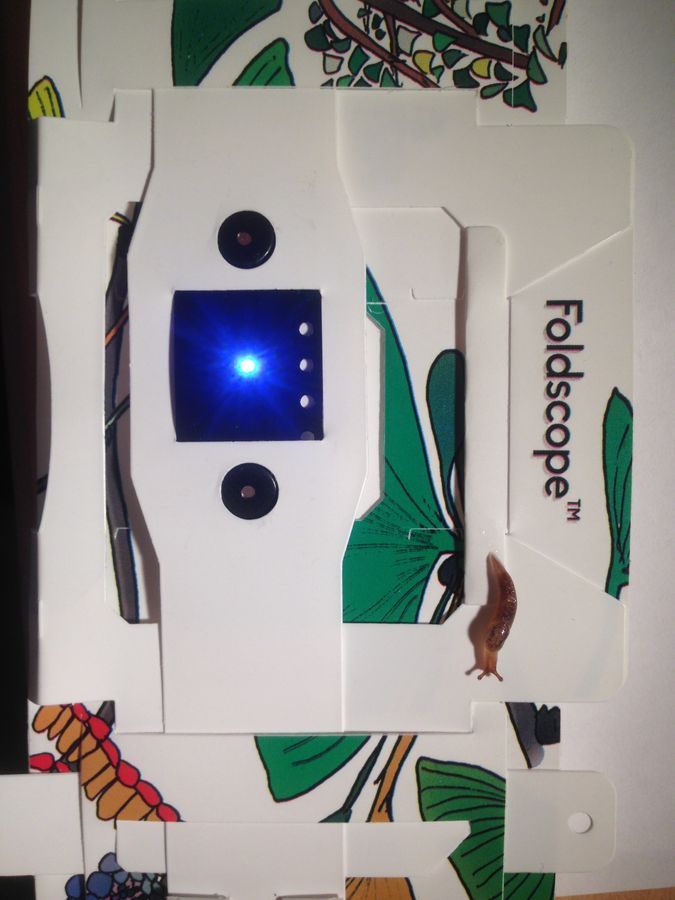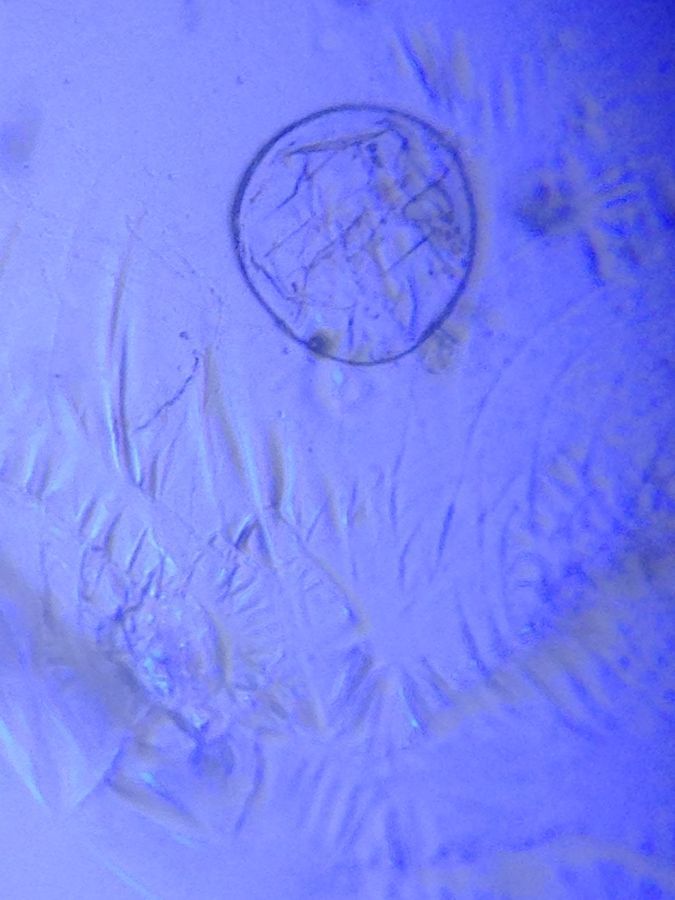How does a snail move?
 Nov 18, 2014 • 5:01 AM UTC
Nov 18, 2014 • 5:01 AM UTC United States
United States 140x Magnification
140x Magnification Microorganisms
Microorganisms
Manu Prakash
I am a faculty at Stanford and run the Prakash Lab at Department of Bioengineering at Stanford University. Foldscope community is at the heart of our Frugal Science movement - and I can not tell you how proud I am of this community and grassroots movement. Find our work here: http://prakashlab.stanford.edu
266posts
1192comments
42locations

Summary: I have always wanted to watch a snail move under a microscope. Today is my lucky day!!
Snails are beautiful. They are graceful, well behaved (let’s not talk about cone snails), elegant and just magical to watch. And they are everywhere. Sometimes they harbor terrible diseases (Schistosomiasis, which is endemic in sub-saharan Africa) and sometimes they make a delicious meal.
Since I was a kid, I used to wonder about the myth – can snails walk on a blade. More importantly, I also used to be very perplexed – how can snails walk at all? They have no legs!!! My mom got so fed up with me since I had started collecting snails to study this, one time she threw out my entire colony. But it was easy to collect them again, didn’t I say they are everywhere.
So today, I wanted to find out how snails actually move. From our perception at the macroscopic scale – you would thick they move very slowly. Very very slowly – right. But zoom right in, and at small scale, that movement will appear very very fast at a cellular level. So – here is my challenge; can I image a live snail inside a Foldscope!!!
Method:
1. First I need a live snail. I found one walking in the garden in the morning. I saw a shiny trail of mucus as well, and so was able to identify the same very clearly. The trail almost led me to the snail.
2. This was a small scale; so I could mount it in the foldscope slide. Also; the snail had no hard shell. Most likely this was a juvenile snail – choosing the snail that I could put alive inside the foldscope was the key.
3. I mounted the snail in two transparent tape and foldscope slide while keeping enough space for it to move around. I made sure it was not completely squashed.
4. I observed the surface of the snail; both on the bottom foot and top surface. Here I am only uploading data from the bottom foot.
5. It was very clear that the snail was generating a mucus film. At a later point I images the mucus film after it had dried – see images below of the wrinkling pattern of the mucus film.
Results:
1. I was so thrilled to see that I was able to confine the snail in our simple tape/plastic slides. It could still crawl around, just not get out of it.
2. The first thing I imaged while the snail was moving was the foot. It’s very obvious in the video below; you can clearly see translational waves on the “snail foot”. You see a lot of fluid around, since the snail is covered in mucus.
https://www.youtube.com/watch?v=mPHksWU1hds&feature=youtu.be
3. The mucus dries up quickly, to form a thin slimy film; which buckles to form interesting patterns. This buckling happens because as the mucus dries (with solvent evaporating – which is most likely water); a volume shrinkage happens which essentially contracts this very thin film. A very thin film when contracted results in wrinkling.
Snails are beautiful. They are graceful, well behaved (let’s not talk about cone snails), elegant and just magical to watch. And they are everywhere. Sometimes they harbor terrible diseases (Schistosomiasis, which is endemic in sub-saharan Africa) and sometimes they make a delicious meal.
Since I was a kid, I used to wonder about the myth – can snails walk on a blade. More importantly, I also used to be very perplexed – how can snails walk at all? They have no legs!!! My mom got so fed up with me since I had started collecting snails to study this, one time she threw out my entire colony. But it was easy to collect them again, didn’t I say they are everywhere.
So today, I wanted to find out how snails actually move. From our perception at the macroscopic scale – you would thick they move very slowly. Very very slowly – right. But zoom right in, and at small scale, that movement will appear very very fast at a cellular level. So – here is my challenge; can I image a live snail inside a Foldscope!!!
Method:
1. First I need a live snail. I found one walking in the garden in the morning. I saw a shiny trail of mucus as well, and so was able to identify the same very clearly. The trail almost led me to the snail.
2. This was a small scale; so I could mount it in the foldscope slide. Also; the snail had no hard shell. Most likely this was a juvenile snail – choosing the snail that I could put alive inside the foldscope was the key.
3. I mounted the snail in two transparent tape and foldscope slide while keeping enough space for it to move around. I made sure it was not completely squashed.
4. I observed the surface of the snail; both on the bottom foot and top surface. Here I am only uploading data from the bottom foot.
5. It was very clear that the snail was generating a mucus film. At a later point I images the mucus film after it had dried – see images below of the wrinkling pattern of the mucus film.
Results:
1. I was so thrilled to see that I was able to confine the snail in our simple tape/plastic slides. It could still crawl around, just not get out of it.
2. The first thing I imaged while the snail was moving was the foot. It’s very obvious in the video below; you can clearly see translational waves on the “snail foot”. You see a lot of fluid around, since the snail is covered in mucus.
https://www.youtube.com/watch?v=mPHksWU1hds&feature=youtu.be
3. The mucus dries up quickly, to form a thin slimy film; which buckles to form interesting patterns. This buckling happens because as the mucus dries (with solvent evaporating – which is most likely water); a volume shrinkage happens which essentially contracts this very thin film. A very thin film when contracted results in wrinkling.

Note: Finally, here is proof that the snail walked out unharmed after the experiment. It was so engaging to watch it crawl away from the microscope, since I had just watched at small scale – it’s trick to generate this propulsion mechanism.
https://www.youtube.com/watch?v=7e3xyupEgjc&feature=youtu.be
https://www.youtube.com/watch?v=7e3xyupEgjc&feature=youtu.be
Sign in to commentNobody has commented yet... Share your thoughts with the author and start the discussion!

 0 Applause
0 Applause 0 Comments
0 Comments
















